

January 2023 Edition!
AIU News + Essays + Education + Culture + Science + Technology + Art + Design + Body + Mind + Environment + Human Rights + Animal Rights + Animation + About AIU


AIU News + Essays + Education + Culture + Science + Technology + Art + Design + Body + Mind + Environment + Human Rights + Animal Rights + Animation + About AIU





 DECEMBER, 2022. These graduate students completed their program
with a high cumulative grade point average, which reflects
the quality of performance within their respective major.
Congratulations!
DECEMBER, 2022. These graduate students completed their program
with a high cumulative grade point average, which reflects
the quality of performance within their respective major.
Congratulations!

| Miguel Domingos Júnior Doctor of Management Strategic Management Angola |
António Da Silva Feijó Júnior Doctor of Science Strategic Management Angola |
Juan Ariel Pascual Haigh Doctor of Psychology Research and Approach of Bullying Argentina |
Yesenia Lisbet Diamond Daguer Bachelor of Science Sound Engineering Bolivia |
Ogopoleng Batisi Doctor of Science Gerontology and Public Health Botswana |
Bitsure Jean Claude Doctor of Communications Journalism & Conflict Resolution Burundi |
| Etah Ojongayuk Ayem Emmanuel Bachelor of Science Agribusiness Cameroo n |
Ansu Keifala Doctor of Philosop hy Geotechnical Engineering Canada |
Shetal Vijayan Doctor of Philosop hy Clinical Psychology Canada |
Abdirashid Dahir Ali Master of International Business International Business China |
Víctor Rafael F. Valencia Abadía Post-Doctorate of Science Architecture Colombia |
Alenna Zayas Banteurt Master of Health Science Public Health Cuba |
| Andrea Simeona Suero Toribio Doctor of Education Education Dominican Republic |
José Silvestre Quezada Sánchez Post-Doctorate of Administration Rural Administration Dominican Republic |
Josefina Pepin-Ubri Doctor of International Relations International Relations Dominican Republic |
Yalena Plasencia Pérez Master of Business Marketing Marketing Equatorial Guinea |
Tesfaye Worku Moges Doctor of Science Agriculture Ethiop ia |
Christopher Sarbah Doctor of Philosop hy Governance and Leadership Ghana |
| Eric Burphy Duncan Doctor of Education Educational Administration Ghana |
Edward Oduro Master of Business Administration Operation Management Ghana |
Raphael Kafui Natsui Doctor of Philosop hy Data Science Ghana |
Isabella Otoo Bachelor of Science Computer Science Ghana |
Boateng Isaac Kwadwo Certificate of Science Civil Engineering Ghana |
Ligia Gabriela Caceros Oliva Bachelor of Business Administration Business Administration Guatemala |
| Ma. Teresa Alvarez Pichillá de Q. Bachelor of Accounting Accounting Guatemala |
Vijay Mangal Bachelor of Science Architecture Guyana |
Nehal Gadhvi Doctor of Marketing Marketing India |
Michael Clive Tracey Bachelor of Business and Economics Logistics and Supply Chain Management Jamai |
Mona Mneimneh Doctor of Science Human Development, Psychology Leba non |
Rachel Nyanquoi Jackson Master of Business Administration Business Administration Liberia |
| Kenneth Kamau Kabage Bachelor of Business Business Management Mal |
Diallo Alhakimou Doctor of Science Computer Science Mali |
Martin Abelardo Zuñiga Navarro Doctor of Science Psychology Mexico |
Coral Garza Lettiery Doctor of Educational Psychology Educational Neuroscience Mexico |
Eduardo Rivera León Doctor of International Business International Business Mexico |
Gilberto Barrientos Baez Doctor of Science Health Science Mexico |
| Ali Yero Amadou Doctor of Economics Economics Niger |
Ugwu, Michael Okenna Doctor of Science Civil Engineering Nigeria |
Emmanuel Dangana Monday Doctor of Philosop hy Political Geography & Electoral Analysis Nigeria |
Osondu Godwin Atagbuzia Doctor of Strategic Leadership Peace, Leadership and Conflict Resolution Nigeria |
Olufemi Emmanuel Adeola Doctor of Philosop hy Environmental Science Nigeria |
Oriyomi Olounwa Ladigbolu Doctor of Finance Finance Nigeria |
| Aisha Ahmed Abubakar Doctor of Public Health Public Health Nigeria |
Fadi AbuAita Post-Doctorate of Business Adm. Business Management Palestine |
Heber Héctor Milla Caballero Doctor of Science Systems Engineering Peru |
Roque Alejandro Contreras Fraga Doctor of Philosop hy Business Administration Peru |
Edgar Armando Crespo Bujosa Doctor of Science Computer Science and System Engineering Puerto Rico |
Karla A. Fort Fernández Doctor of Science Clinical Psychology Puerto Rico |
| Sidonia Shanica Sidonie-Volney Doctor of Business Administration Accounting and Finance Saint Lucia |
Mohammad Ibrahim o Alsaleh Bachelor of Marketing Marketing Saudi Arabia |
Gelage Noeldar Hoareau Doctor of Human Resources Management Human Resources Management Seychelles |
Abdi Abdillahi Hassan Doctor of Business Administration International Business Management Somalia |
Ahmed Sheikh Nur Osman Master of Business and Economics Leadership and Management Somalia |
Lopeyok Sammy Aperengole Bachelor of Social and Human Studies Public Administration and Management South Sudan |
| Sibusiso Bhekie Mahlalela Doctor of Philosop hy Agricultural Management Swaziland |
Hamis Samike Bachelor of Science Occupational Health and Safety Mgmt. Tanzania |
Terence Tan Doctor of Anthropo logy Anthropology Thailand |
Hassan Rahnama Doctor of Business Administration Business Management Türkiye |
Sinem Cakir Bachelor of Science Architecture Türkiye |
Viola Irene Nansamba Bachelor of Management Management Uganda |
| Chukwunonso Eghen Doctor of Healthcare Administration Healthcare Compliance USA |
Juana Augusta Justiniano Rojas Bachelor of Science Nutrition USA |
Susan Clare Ndeezo Doctor of Education Special Education USA |
María Augusta Milliken Doctor of Literature Latin American Literature USA |
Ulrick Jean Claude Doctor of Science Leadership and Management USA |
María Isabel Maegli Novella Master of Arts Arts USA |
| Anne Stella Ndangang Fomumbod Doctor of Social Sciences Leadership and Organizational Development USA |
Patricka Anthonia Murray-Gager Master of Business Management Business Management USA |
Nadja Eliza Wrchota Navia Bachelor of Science Nutrition USA |
Belkis Margarita Baez Master of Science Human Services USA |
Olasimbo Davidson Doctor of Health Administration Health Administration USA |
Adalgisa Antonia Nunez de los Santos Master of Education Inter. Pedagogical and Learning Scholar USA |
| Syed Murtaza Jaffar Doctor of Philosop hy Mechanical Engineering USA |
Eneya Nkombalume Bachelor of Business Administration Business and Administration Zambia |
Betty Msimuko Doctor of Philosop hy Natural Resources Management Zambia |
|||

 Tshepang Mokwenaotsile
Tshepang Mokwenaotsile Amadou Koita
Amadou Koita Wahid Jubran Hamad
Wahid Jubran Hamad Adekemi Adebamiji
Adekemi Adebamiji
Many of us are left thinking
that with the development
of science and technology
that we have nowadays,
how it’s possible that we are
experiencing the global crisis
that we have.
Crisis in terms of food,
education, health, housing
and agriculture. There are all
the countries that don’t know
what to do. Countries don’t
know what to do because the
current policy doesn’t seem to
be fulfilling the function for
which it was created.
Science is there and it can
tell us what to do. “Science is
a style of thought and action:
precisely the most recent, the
most universal and the most
profitable of all styles.” (Bunge,
2004, p. 19).
Bunge says that it’s the
most profitable of all styles
of thought. From what Bunge
says, there are other styles of
thinking that are not helpful.
“Common sense can’t
achieve more than limited
objectivity because it’s too
closely linked to perception
and action, and when it goes
beyond them it often does so
in the form of myth: only science
invents theories which,
though not limited to condense
our experiences, they can be
contrasted with it to be verified or falsified.” (Bunge, 2004, p. 21).
What at first glance seems to
be happening is that decisions
are being made in the
governance of many nations,
decisions far removed from the
position of science.
“Scientific research starts
with the perception that the
stock of knowledge available is
insufficient to handle certain
problems.” (Bunge, 2004, p. 19).
What we see according to what
Bunge says is that not enough
research is done to solve the
problems.
Pérez Tamayo adds about
science: “Creative human
activity whose objective is the
understanding of nature and
whose product is knowledge,
obtained through a deductively
organized scientific method
and which aspires to reach the
greatest possible consensus.”
(Pérez Tamayo, 2017, p.19).
Science seeks to understand
nature, so one must ask what
happens with its destruction,
that we have reached the
global warming that we have
today. It’s true that compared
to other areas of knowledge,
if we look for sources, little is
found, but there is something
to work with.
“Scientists have not bothered
much about the rationale or
systematicity of the rules of
scientific procedure: they don’t
even bother to explicitly state
all the rules they use.” (Bunge,
2004, p. 29).
We always see a lot of information
about the methods
that science has; in addition,
the universities and research
centers determine the research
method to be used and the way
to present the final report.
“To Kuhn, science is a type
of organized professional activity,
possessing certain models
of control of the results,
which depend (and therein lies
one of his contributions) not
only on logical or intellectual
factors but also on historical
and social”. (Sandín Est eban, 2003,
p, 7). They investigate universities,
centers created by
countries for this purpose and private companies. Each with
different interests.
“…it must be categorically
declared that scientific activity
in a technological society
is not and can’t be politically
neutral. Some have recognized
this, especially after Hiroshima
and Nuremberg.” (Lévy Lebl ond and
Jaubert, 1980, p. 71). It has always
been the debate of the why of
the investigations. Today we
know that knowledge must be
for something; the problem is
in the endings.
“In our society, in our time,
you can’t escape the political
implications of scientific
management.” (Lévy Lebl ond and
Jaubert, 1980, p. 75). It’s necessary,
in relation to the objectives of
scientific research, that when
Oppenheimer finished the investigation
on the power of the
atom: he cried, for the consequences
that he saw in what
we already know happened in
Hiroshima and Nagasaki.
“H. Robert Oppenheimer,
the man who was responsible
for the Los Alamos project for
the construction and testing
of the first atomic bombs,
declared in 1967: Our work
changed the conditions of human
life, but the use made of
these changes is a matter for
the governments, not of the
wise.” (Lévy Lebl ond and Jaubert, 1980,
p. 71). Nowadays, how many resources
of time and money are
spent on weapons and other objects that don’t contribute
to the greatness of nature or of
human beings.
Since what we see is that
politicians make their decisions,
regarding all aspects of
development of their peoples,
based on their interests, not
on what science and scientists
say. Nowadays important
organizations have had to
give themselves the task of
creating specific areas to deal
with the human needs that
are emerging and that many
governments don’t solve, for
example: The United Nations
Organization. UN.
The United Nations is in
charge of the Summit, it makes
for global warming, which it
calls: Conference of the Parties.
The last Summit has just been
held in Egypt this end of 2022, from November 6 to 18. The
one now was 27.
“The countries gathered
at COP27 agreed that a fund
will be created to repair the
countries that are suffering the
most from the consequences of
global warming and that have
contributed the least to it.”
The UN is also working to generate
agreements with countries
trying to avoid the famine
that is seen coming in 2023.
What this Summit couldn’t
achieve was the Paris Agreement
for 2.5 Celsius of global
warming. The countries that
contribute the most to it
didn’t attend: China, India and
Russia.
Regarding global welfare
problems, the UN created the
Sustainable Development
Program that has 17 principles that begin with: 1. End of poverty,
2. Zero hunger...
What is clear to us is that
there is a high percentage of
countries governed by the interests
of their rulers and that
special organizations have been
created to resolve the needs.
Although science is being used
to generate group benefits. In
universities, students do research
to solve specific cases.
You are studying at Atlantic
International University, AIU,
and you are asked that your
work be a solution to something
in your community, your
country and international society.
You have an extraordinary
opportunity to help build the
world we need to live in.
You can feel like those who
work for the UN: we build the
world instead of destroying it.
This end of 2022 has been
one of uncertainty in uncertainty;
meeting of the group
of the 20 most developed
countries looking for solutions
to the conflicts we are experiencing,
but nothing is achieved
because there are countries
that do not want to find solutions
and whose only objective
is profit and money.
The United Nations Educational,
Scientific and Cultural
Organization publishes
a beautiful document on science:
https://es.unesco.org/themes/
ciencia-al-servicio-sociedad
The questions we have
to ask, ourselves are the
following:
Why are the people we
have as rulers elected?
Why do we keep
ignoring science?
Can we continue living
the way we are doing it?
Until when will we hear
the many lies
from many governors?
BIBLIOGRAPHY. Bunge, M. 2004. La investigación científica.
México: Planeta | Grupo de los 20. G-20 Cumbre Urgente https://
news.un.org/es/story/2022/11/1516872 | Lévy Leblond y Jaubert. 1980. (Auto)
crítica de la Ciencia. México; Nueva Imagen | Naciones Unidas.
Conferencia de las Partes COP27. Retrieved from: https://www.un.org/es/climatechange/
cop27 and from: https://news.un.org/es/events/conferencia-de-las-nacionesunidas-
sobre-el-cambio-climatico-cop27 | UNESCO Ciencia al servicio de la
sociedad. Retrieved from: https://es.unesco.org/themes/ciencia-al-servicio-sociedad |
UNAM. 2017- Colección Academia para jóvenes http://www.cch-naucalpan.
unam.mx/V2018/imgprin/publicaciones/academiapj/Comoacercarsealaciencia_PerezTamayo.
pdf | Sandín, M. 2003. Investigación Cualitativa en Educación.
Fundamentos y Tradiciones. España: McGraw-Hill/Interamericana
de España.

Background
Schizophrenia is a heterogeneous
illness with a millstone
that can vary significantly
depending on gravity and
duration. Former research has
advised that patients in the
former stages of schizophrenia,
naturally in the early onset of
schizophrenia, benefit from
effective primary treatment.
A systematic literature review
was therefore directed to scrutinise
the influence of dynamic
and supportive psychotherapies,
both individual and
group, and psychosocial skills
courses on a scientific and
social consequences for people
with schizophrenia.
Aims of the review
The initial review aims to
measure the evidence for the
effectiveness and value of
group analysis or dynamic
group. Numerous meta-analytic
evaluations suggest that
trained skills can be preserved.
Information is presented on
the types of clients used, the
size of group therapy, and
future research targets to
compare positive psychological
coaching representations,
which are provided scientifically
and systematically
on optimistic psychological
instruction.
Keywords: In those databases
obtained primary search
investigate “positive psychology
coaching, strengths coaching,
positive therapy at work,
positive personal development,
and wellbeing coaching.
The term, psychosocial skills
training, incorporates cognitive
approaches, into, social skills
training, and is considerably
used besides traditional. Social
skills education, psychosocial
readjustment, rehabilitation
counselling, or social support
networks,” indicating these
interventions.
1. General introduction
This final thesis project
aims to illustrate the scope
of mental health disease and
enhance the significance of
psychiatric maintenance in
the United Kingdom, producing
implications for mental
health nursing. This project
has developed knowledge and
understanding that can integrate
good active practice and
effective strategies.
1.1 The scope of mental illness
in psychiatry
This final thesis project
aims to illustrate the scope of
mental illness and the status of
psychiatric care in England and
deliver significance for mental
health nursing. This project
sought to improve knowledge
and understanding to implement
good practices and effective
strategies.
1.1.1 The role of health
professionals increasing
personal growth
A future vision for mental
health nurses arises to organise
work with vulnerable groups,
develop new psychological
interventions to treat complex
needs, and offer a unique quality
of life supporting enduring
mental illnesses such as
psychosis. The implications for
mental health nursing practice
are debated.
1.1.2 Successful physical
health and welfare
is a fresh reserve
This reserve is for healthcare
professionals like mental
health nurses, depending on
where they work. Individuals
with schizophrenia have
more complex physical health
than the whole population.
Studies in developed countries
demonstrate that their
health behaviours are often
undesirable.
1.1.3 Person-centred care
for people with schizophrenia
Care management should reflect
an individual’s needs and
preferences. People diagnosed
with schizophrenia should have the prospect to make informed
choices involving advanced
decisions and innovative
statements, regarding their
treatment and carer, in association
with their professional
partitioners (NICE, 2015).
1.2 Purpose of the study
This final thesis is part of a
process that uses data to seek
and ensure the distribution of
evidence-based care as compulsory
by population demand.
National Institute of Excellence’
NICE guidelines (2022)
for Health and Care workers
are evidence-based recommendations,
guidance and
combined quality standards
concealing the management
and maintenance of people’s
psychosis and schizophrenia.
1.3 Genetics of schizophrenia
Although the idea that psychotic
disorders reproduce brain
dysfunction was dominated by
psychosocial philosophies initially
in the 1900s, it coincides
with the growing habit of localising
vulnerability for psychotic
disease in the brain. Additional
investigators were zeroing on
etiologic features. Neurodevelopmental
proportions: evidence
signifying that malformed fatal
brain growth can interpose to
the risk for schizophrenia converged
with other findings that
behavioural signs of vulnerability
exist at birth (Brown, 2012).
1.4 Psychosocial treatments
for schizophrenia
Schizophrenia is a mental
health disorder expressed by
psychotic indicators such as
hallucinations and delusions. It
involved some negative signs,
including anhedonia and apathy,
but also demonstrated a
range of cognitive impairment
and some functioning defects
(Longenecker, 2022).
1.4.1 Cognitive behaviour
therapy (CBT)
This therapy can improve individuals
modify their thinking
and behaviour. A therapist will
indicate to them ways to distribute
voices and hallucinations.
Combining CBT sessions
and medication can eventually
tell what triggers their psychotic
occurrences.
1.4.2 Cognitive enhancement
therapy (CET)
This kind of therapy is the
exact as cognitive remediation;
people demonstrate how
to improve collective cues and
prompt and adjust their cognition,
devotion, and attitude
to coordinate their feelings. It
connects computer-based brain
exercises and group sessions.
1.4.3 Predisposing factors
and prevention
Routine data is not obtainable
to consistently outline discrepancies
in levels of predisposing
features and evaluate
the results of anticipation
interventions for psychosis.
Over time, metrics that always
describe risk, defensive factors,
and intervention results
will be established.
2. The research focus:
theoretical framework
The prominence of devoted
work touching this study
ground; contributes to current
knowledge and others who
benefit from it. The outline
sector within the importance
of this research should embrace
investigating the problem
recorded and supporting the
reader where there is a gap in
the literature.
3. Other research
and findings
A holistic approach to
overseeing mental issues and
physical health is necessary.
The system must confront the
unsatisfactorily huge ‘impulsive
mortality gap’. It is
subsequently imperative that
individuals with mental health
issues collect the physical
healthcare required, which
helps retrieve support for advantageous
lifestyles.
3.1.1 Social cognition
training
The profuse study illustrates
that people with schizophrenia
have considerable cognitive
impairments. Social cognitive
education coaching can be perceptive
as covering three approaches:
evidence of conceptdirected
and broad-grounded
treatments (Cramer, 2019).
3.1.2 Psychological
interventions for schizophrenia
Previous psychological interventions
have permanently
cured psychotic occurrences
and developed outcomes associated
with psychotic indicators
and quality of life. In the initial
periods of psychological science,
the research landscape is
massively different. 3.2 Population, intervention,
comparison and outcome
(PICO) characteristics
Consequently, health professionals
judge what procedures
could develop access and
commitment. In the study
Question, the inclusion and
exclusion criteria extended are
obtainable as follows.
1. Do psychopathology or
relapse in individuals with
schizophrenia reduced by
these interventions?
2. Do psychosocial skills training
persist over time?
3. Do the effects generalize
from the training set into
“real life”?
4. Research methods
Goals and objectives of the
research, research hypotheses,
research strategy and techniques,
data sources, method
of data collection, method
of data analysis, verification
ethical considerations, challenges
encountered in conducting
research.
4.1 Research approach
A research approach defines
a biopsychosocial model
clarifying the components of
such psychological methods
for therapies, effectively based
on confidential treatment for
schizophrenia. The literature
review subjugates systematic
ways to classify and critically
evaluate a given study area to
synthesise an answer to a consecrated
research question.
4.2 Study design protocol
The study protocol for this
review and research of the
following Literature Databases
demonstrates the list of relevant
electronic bibliographic
databases for the intervention
studies founded on therapy
for an individual with schizophrenia.
The database(s) and
other sources are built on the
task force’s work and clinical
trial registries. Trip Database,
Cochrane Library, CINAHL,
PROSPERO, PubMed’ central an
archive of life science journals’,
PsychInfo, and Social
Science Citation Index. The
positive effects of interventions
addressing health professionals
are outlined in the
Abstract section.
4.3 Study Selection
The systematic literature
review extract of 2,252 annals
was curtained, applying precise
inclusion and exclusion
criteria. The development in
the exclusion was founded
on replicas (n = 1,232), topics
(n = 895), abstracts (n = 78),
and criteria intrusions (n =
23). Twenty-four educational
incorporate noble-reviewed
books/magazines/journals
on optimistic psychological
coaching.
5. Results of research
analysis questions about
alternative approaches
and findings
There is agreement that treating
schizophrenia should unite
anti-psychotic psychosocial
interventions and medications
to tackle complex health needs
and social and economic issues.
The efficacy of communitybased
psychosocial interventions
in these places is vague.
5.1 Do psychopathology or
relapse in individuals with
schizophrenia is reduced by
these interventions?
Pearson (2020) and Blum
(2017) deduce the findings
from major meticulous
psychotherapy studies with
people suffering from schizophrenia.
Separate treatment
does not produce a significant
part in decreasing symptoms,
reducing admission in hospital,
or improving community
regulation.
5.2 Do psychosocial skills
training persist over time?
People can preserve over
time the skills and capabilities
they have acquired
beyond psychosocial skills
studies. Evidence from the
description and meta-analytic
reviews suggests that
acquired skills persevere over
time (Gough, 2019).
5.3 Do the effects generalise
from the training set into
“real life”?
Research on the question of
skill generalisation has proceeded
across distinct phases.
More lately, other educations
have significant restrictions
in research pieces of training
have not assessed the degree
to which themes have used
developed skills in daily lives.
6. Limitations and
recommendations
Despite painstaking efforts
to guarantee this systematic
review's significance and
consistency, several limitations
exist. Primary, given the subjective
nature of the growth of
the search protocol. Secondly,
just academic peer-studied
publications were comprised as
a portion of the study protocol.
Third, grey literature, such as
seminars or publications not
written in English, was also
excluded. Fourthly, the relevant
literature and several essential
publications remain excluded,
either founded on topics or the
nominated keywords.
7. Conclusion
This review links the available
literature scientifically and
systematically on optimistic
psychological instruction. In
this context, the main recommendation
of this study is for
additional research to be carried
out in this sense. Several
issues remained unexplored:
the lack of knowledge on
psychosis may cause people to
be reticent in engaging with
people suffering from schizophrenia.
Other reasons may be
quoted in this sense, for example,
lack of time to dedicate
to building social connections
with these people.
 Nationally, adolescent depression
and anxiety —already at crisis
levels before the pandemic— have
surged amid the isolation, disruption
and hardship of covid-19. Even as
federal coronavirus relief money has
helped schools step up their efforts to
aid students, they also have come up
short. It’s unclear how much money is
going to mental health, how long such
efforts will last or if they truly reach
those who struggle most.
“The need is real, the need is dire,”
said Alberto Carvalho, superintendent
of the Los Angeles Unified School
District, who recalled hearing just that
day from the district’s mental health
partners that calls about suicidal
thoughts had quadrupled. “We’re living
through historically unprecedented
times,” he said. More than 75 percent of schools surveyed in spring said their
teachers and staff have voiced concerns
about student depression, anxiety
and trauma, according to federal data.
Nearly as many schools cited a jump in
the number of students seeking mental
health services. But mental health is
not the only pandemic priority. Schools
are spending vast sums of their coronavirus
relief money on ventilation
upgrades, expanded summer learning,
after-school programs, tutors and
academic specialists. ...
In Maine, waiting lists grew so
long last year that school counselor
Tara Kierstead began looking out of
state for therapists who had openings
—a solution that was not practical
for many families. ...
Read full text:
Nationally, adolescent depression
and anxiety —already at crisis
levels before the pandemic— have
surged amid the isolation, disruption
and hardship of covid-19. Even as
federal coronavirus relief money has
helped schools step up their efforts to
aid students, they also have come up
short. It’s unclear how much money is
going to mental health, how long such
efforts will last or if they truly reach
those who struggle most.
“The need is real, the need is dire,”
said Alberto Carvalho, superintendent
of the Los Angeles Unified School
District, who recalled hearing just that
day from the district’s mental health
partners that calls about suicidal
thoughts had quadrupled. “We’re living
through historically unprecedented
times,” he said. More than 75 percent of schools surveyed in spring said their
teachers and staff have voiced concerns
about student depression, anxiety
and trauma, according to federal data.
Nearly as many schools cited a jump in
the number of students seeking mental
health services. But mental health is
not the only pandemic priority. Schools
are spending vast sums of their coronavirus
relief money on ventilation
upgrades, expanded summer learning,
after-school programs, tutors and
academic specialists. ...
In Maine, waiting lists grew so
long last year that school counselor
Tara Kierstead began looking out of
state for therapists who had openings
—a solution that was not practical
for many families. ...
Read full text:
 It was previously thought that the
genetic differences between the left
and right hemispheres of the brain
determine whether someone is left- or
right-handed. But a study published
last year in the journal eLife found that
the answer could lie in the spinal cord.
The research found that gene activity
in the spinal cord was asymmetrical in
the womb and could be what causes a
person to be left- or right-handed.
Arm and hand movements start in
the brain, in the motor cortex, which
sends a signal to the spinal cord that’s
translated into a motion. The researchers
found that while the fetus is
growing in the womb, up until about
15 weeks, the motor cortex and the
spinal cord are not yet connected, but
right- or left-handedness has already
been determined. In other words, the
fetus can already start movements
and chooses a favorite hand before the
brain starts controlling the body.
To study this, the researchers analyzed
gene expression in the spinal cord
in the eighth through the 12th week of
pregnancy. They found significant differences
in the left and right segments
of the spinal cord that control arm and
leg movement. They concluded that the
asymmetrical nature of the spinal cord
could be down to something called epigenetics,
or how organisms are affected
by changes in their gene expression
rather than in the genes themselves.
These changes are often brought about
by ...
Read full text:
It was previously thought that the
genetic differences between the left
and right hemispheres of the brain
determine whether someone is left- or
right-handed. But a study published
last year in the journal eLife found that
the answer could lie in the spinal cord.
The research found that gene activity
in the spinal cord was asymmetrical in
the womb and could be what causes a
person to be left- or right-handed.
Arm and hand movements start in
the brain, in the motor cortex, which
sends a signal to the spinal cord that’s
translated into a motion. The researchers
found that while the fetus is
growing in the womb, up until about
15 weeks, the motor cortex and the
spinal cord are not yet connected, but
right- or left-handedness has already
been determined. In other words, the
fetus can already start movements
and chooses a favorite hand before the
brain starts controlling the body.
To study this, the researchers analyzed
gene expression in the spinal cord
in the eighth through the 12th week of
pregnancy. They found significant differences
in the left and right segments
of the spinal cord that control arm and
leg movement. They concluded that the
asymmetrical nature of the spinal cord
could be down to something called epigenetics,
or how organisms are affected
by changes in their gene expression
rather than in the genes themselves.
These changes are often brought about
by ...
Read full text:
 A team of scientists from the University
of Cambridge were measuring
the brain waves of the sedated animals
as part of a study aimed at understanding
the effect of therapeutic drugs on
people with Huntington’s disease.
For the first and second phases of the
experiment, researchers administered
12 mg/kg of ketamine to the sheep and
monitored their brain activity both
while they were anaesthetised and as
the drug gradually wore off. For the
third phase, the researchers monitored
the brain activity of six of the 12 sheep
after they were given a single ketamine
dose of 24mg/kg. What they found
was that the sheep displayed “unusual”
brain wave activity while they
were coming out of sedation —which
likely accounts for the dissociative and
hallucinatory effects of a ketamine
high— while the brain waves of sheep
that were given a more intense dose
appeared to stop altogether for a period
of several minutes —a “pause” which
the researchers believe might explain
the experience of a k-hole. ...
Professor Jenny Morton, who led
the research, said “The timing of the
unusual patterns of sheep brain activity
corresponded to the time when human
users report feeling their brain
has disconnected from their body. It's
likely that the brain oscillations caused
by the drug may prevent information
from the outside world being processed
normally.” ...
A team of scientists from the University
of Cambridge were measuring
the brain waves of the sedated animals
as part of a study aimed at understanding
the effect of therapeutic drugs on
people with Huntington’s disease.
For the first and second phases of the
experiment, researchers administered
12 mg/kg of ketamine to the sheep and
monitored their brain activity both
while they were anaesthetised and as
the drug gradually wore off. For the
third phase, the researchers monitored
the brain activity of six of the 12 sheep
after they were given a single ketamine
dose of 24mg/kg. What they found
was that the sheep displayed “unusual”
brain wave activity while they
were coming out of sedation —which
likely accounts for the dissociative and
hallucinatory effects of a ketamine
high— while the brain waves of sheep
that were given a more intense dose
appeared to stop altogether for a period
of several minutes —a “pause” which
the researchers believe might explain
the experience of a k-hole. ...
Professor Jenny Morton, who led
the research, said “The timing of the
unusual patterns of sheep brain activity
corresponded to the time when human
users report feeling their brain
has disconnected from their body. It's
likely that the brain oscillations caused
by the drug may prevent information
from the outside world being processed
normally.” ...
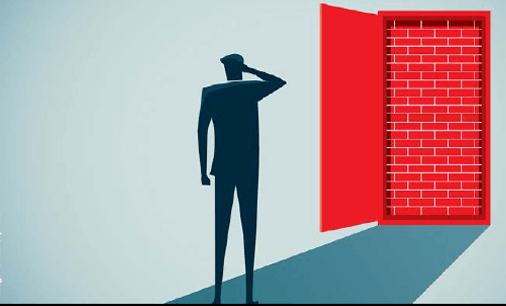 More than one-third of the highest
impact scientific journals do not
offer to publish outsiders’ critiques of
the papers they publish, a study has
found. The practice runs counter to
recommendations from the Committee
on Publication Ethics, to which most of
those journals belong, and to calls from
scholars for journals to be transparent
and responsive when their papers
are questioned. “Scientific knowledge
is like a living organism that needs
the nutrients of critique to survive and
thrive,” says Tom Hardwicke, a metaresearcher
who is moving this month
to the University of Melbourne and is a
co-author of the study, published on 24
August in Royal Society Open Science.
The study, one of the largest of
its kind, identified 330 top-ranked
journals by compiling the 15 titles with
the highest journal impact factors in
each of 22 scientific disciplines. It
analyzed their policies as of late 2019 to
early 2020, finding that 123 don’t offer
formats for critiquing papers after publication,
such as letters, commentaries,
and online comments. Those journals
included some widely cited titles, such
as the Journal of the American Chemical
Society (JACS), the Proceedings of the IEEE,
and Remote Sensing of Environment.
Policies vary by field, the authors
found. All 15 journals in clinical medicine
welcomed critiques, which may
reflect a recognition that flawed papers
can pose direct risk to patient health.
Only two math journals did. ...
Read full text
More than one-third of the highest
impact scientific journals do not
offer to publish outsiders’ critiques of
the papers they publish, a study has
found. The practice runs counter to
recommendations from the Committee
on Publication Ethics, to which most of
those journals belong, and to calls from
scholars for journals to be transparent
and responsive when their papers
are questioned. “Scientific knowledge
is like a living organism that needs
the nutrients of critique to survive and
thrive,” says Tom Hardwicke, a metaresearcher
who is moving this month
to the University of Melbourne and is a
co-author of the study, published on 24
August in Royal Society Open Science.
The study, one of the largest of
its kind, identified 330 top-ranked
journals by compiling the 15 titles with
the highest journal impact factors in
each of 22 scientific disciplines. It
analyzed their policies as of late 2019 to
early 2020, finding that 123 don’t offer
formats for critiquing papers after publication,
such as letters, commentaries,
and online comments. Those journals
included some widely cited titles, such
as the Journal of the American Chemical
Society (JACS), the Proceedings of the IEEE,
and Remote Sensing of Environment.
Policies vary by field, the authors
found. All 15 journals in clinical medicine
welcomed critiques, which may
reflect a recognition that flawed papers
can pose direct risk to patient health.
Only two math journals did. ...
Read full text
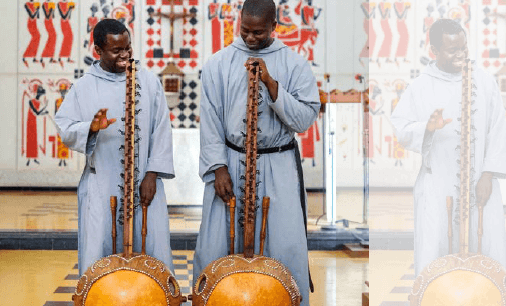 Comprising twenty-one
strings that arch, like the
cables of a suspension bridge,
over a halved and hollowed
calabash, [kora] is the emblematic
instrument of Mandinka
jelis, or griots, a hereditary
caste of singer-storytellers
renowned as keepers of collective
memory. Since the midtwentieth
century, scions of the
great jeli families have guided
the kora’s emergence onto the
global stage, from the stately
duets of the Malian virtuosos
Ballaké Sissoko and Toumani
Diabaté to the late Guinean
singer Mory Kanté’s dance hit
“Yeke Yeke.” Nevertheless, a
pivotal step in its rise occurred
at Keur Moussa [a Benedictine
monastery about an hour’s
drive from the Senegalese capital
of Dakar], whose founders’
quest to Africanize their liturgy
revolutionized the instrument.
If the kora is now a fixture of
world music, lauded by the
London Symphony Orchestra
and inspiring Donald Glover,
it’s partly because of the monks
who took it to church. ...
The monks pray at least six times a day, in accordance
with the canonical hours of the liturgy. Their psalmody is in
French, but hymns and masses are often sung in Diola, Serer, Portuguese Creole, and especially
Wolof, Senegal’s lingua
franca. (Keur Moussa, which
means “House of Moses”
in Wolof, takes its name
from the largely Muslim
village that surrounds it.)
A similar range is reflected
in their instruments, which
include djembe and sabar
drums, a xylophone with
gourd resonators called the
balafon, and a huge hollow
calabash that is struck
at moments of particular
solemnity. But there is little
doubt as to which reigns
supreme. Brother Epiphane
N’tab described the kora as
having an “angelic” sound,
which “naturally carries the
African soul to song.” François
Diabel, a Keur Moussa
monk teaching in the US,
praised its contemplative
aspect; whereas the organ
dominates, the kora encourages
inwardness. “It puts
us in constant movement as
monks and as listeners,” he
told me, describing its gentle
rhythms. “Because we are on a journey, and we don’t have the luxury to stop.” ...
Read full text by Julian Lucas in The Newyorker:
Read full text:
Comprising twenty-one
strings that arch, like the
cables of a suspension bridge,
over a halved and hollowed
calabash, [kora] is the emblematic
instrument of Mandinka
jelis, or griots, a hereditary
caste of singer-storytellers
renowned as keepers of collective
memory. Since the midtwentieth
century, scions of the
great jeli families have guided
the kora’s emergence onto the
global stage, from the stately
duets of the Malian virtuosos
Ballaké Sissoko and Toumani
Diabaté to the late Guinean
singer Mory Kanté’s dance hit
“Yeke Yeke.” Nevertheless, a
pivotal step in its rise occurred
at Keur Moussa [a Benedictine
monastery about an hour’s
drive from the Senegalese capital
of Dakar], whose founders’
quest to Africanize their liturgy
revolutionized the instrument.
If the kora is now a fixture of
world music, lauded by the
London Symphony Orchestra
and inspiring Donald Glover,
it’s partly because of the monks
who took it to church. ...
The monks pray at least six times a day, in accordance
with the canonical hours of the liturgy. Their psalmody is in
French, but hymns and masses are often sung in Diola, Serer, Portuguese Creole, and especially
Wolof, Senegal’s lingua
franca. (Keur Moussa, which
means “House of Moses”
in Wolof, takes its name
from the largely Muslim
village that surrounds it.)
A similar range is reflected
in their instruments, which
include djembe and sabar
drums, a xylophone with
gourd resonators called the
balafon, and a huge hollow
calabash that is struck
at moments of particular
solemnity. But there is little
doubt as to which reigns
supreme. Brother Epiphane
N’tab described the kora as
having an “angelic” sound,
which “naturally carries the
African soul to song.” François
Diabel, a Keur Moussa
monk teaching in the US,
praised its contemplative
aspect; whereas the organ
dominates, the kora encourages
inwardness. “It puts
us in constant movement as
monks and as listeners,” he
told me, describing its gentle
rhythms. “Because we are on a journey, and we don’t have the luxury to stop.” ...
Read full text by Julian Lucas in The Newyorker:
Read full text:
 Behold the Kineon MOVE+, a wearable
light-therapy device that can
reduce inflammation, heal tissues,
relieve chronic pain, and accelerate
recovery simply by using the power
of light. Unlike painkillers that put
chemicals in your bloodstream or
muscle-relief sprays that are just effective
on the surface, the MOVE+ is a
non-invasive device that uses a combination
of LED and Laser light to help
heal muscle and joint pain by working
on the surface as well as reaching deep
into your tissues to boost recovery.
It does so simply by strapping onto
the part of your body that’s facing pain
or inflammation and using dual light
therapy to boost blood flow to the area
to help you recover faster and relieve
chronic pain.
Designer: Kineon Design Labs.
Read full text
Behold the Kineon MOVE+, a wearable
light-therapy device that can
reduce inflammation, heal tissues,
relieve chronic pain, and accelerate
recovery simply by using the power
of light. Unlike painkillers that put
chemicals in your bloodstream or
muscle-relief sprays that are just effective
on the surface, the MOVE+ is a
non-invasive device that uses a combination
of LED and Laser light to help
heal muscle and joint pain by working
on the surface as well as reaching deep
into your tissues to boost recovery.
It does so simply by strapping onto
the part of your body that’s facing pain
or inflammation and using dual light
therapy to boost blood flow to the area
to help you recover faster and relieve
chronic pain.
Designer: Kineon Design Labs.
Read full text
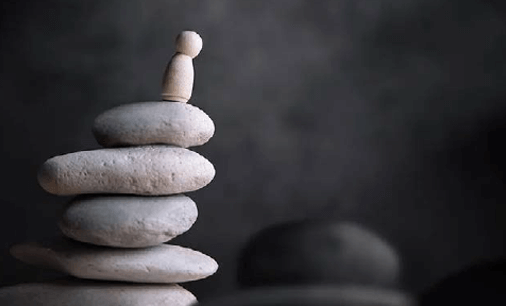 The Werther Effect refers to the
identified rise in sucide rates following
well-publicised reports of deaths
by suicide of celebrities or other wellknown
figures in the media. The term
was coined following the publication of
Johann Wolfgang von Goethe’s novel The
Sorrows of Young Werther, which tells the
story of a romantic infatuation that ends
in suicide. ... With novels being the most
emotive medium of the late 18th century,
the impact of the book cannot be underestimated
—and it is possible that it was
associated with a rise in suicides among
those in similar situations to the novel’s
protagonist. ...
Although this apparent rise in suicide
mimicry was never conclusively proven,
further studies conducted over the
years suggest that suicide contagion
does exist. In fact, it has been such an
identifiable trend that it has led to new
media guidelines about how to report
on suicide responsibly. ...
The first scientific use of ‘Werther
Effect’ was by David Philipps in 1974,
in his pioneering study investigating
the influence of suggestion on suicide.
It was found that, between 1947 and
1968, suicides increased immediately
after publication of a death by suicide
in newspapers in Britain and the US.
This increase was found to be restricted
mainly to the region in which the news
story was circulated.
In the 21st century ... researchers are
starting to consider just how platforms
such as Twitter and Facebook can impact
suicide. ...
Read full text:
The Werther Effect refers to the
identified rise in sucide rates following
well-publicised reports of deaths
by suicide of celebrities or other wellknown
figures in the media. The term
was coined following the publication of
Johann Wolfgang von Goethe’s novel The
Sorrows of Young Werther, which tells the
story of a romantic infatuation that ends
in suicide. ... With novels being the most
emotive medium of the late 18th century,
the impact of the book cannot be underestimated
—and it is possible that it was
associated with a rise in suicides among
those in similar situations to the novel’s
protagonist. ...
Although this apparent rise in suicide
mimicry was never conclusively proven,
further studies conducted over the
years suggest that suicide contagion
does exist. In fact, it has been such an
identifiable trend that it has led to new
media guidelines about how to report
on suicide responsibly. ...
The first scientific use of ‘Werther
Effect’ was by David Philipps in 1974,
in his pioneering study investigating
the influence of suggestion on suicide.
It was found that, between 1947 and
1968, suicides increased immediately
after publication of a death by suicide
in newspapers in Britain and the US.
This increase was found to be restricted
mainly to the region in which the news
story was circulated.
In the 21st century ... researchers are
starting to consider just how platforms
such as Twitter and Facebook can impact
suicide. ...
Read full text:
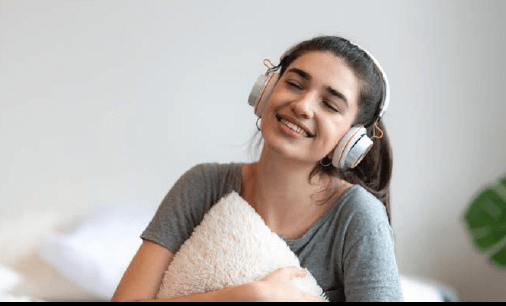 It’s common to feel overwhelmed and
anxious. For some, these feelings
might be completely unfamiliar, while
others might be looking for new ways
to cope with or manage existing emotions
or conditions. Whatever your level
of anxiety or unrest, it can be helpful
to try your hand at meditation to keep
your mental health in check.
Calm is a mindfulness app for both
newcomers and meditation enthusiasts
alike. It can help users find inner peace
and navigate life’s stressors. It is available
for iOS, Android, and desktop. ...
Pros: Easy-to-use interface • Sleep
stories recorded by celebrities, like
Harry Styles, Matthew McConaughey,
and Bob Ross • App is regularly updated
• Ability to track basic statistics, like
the number of consecutive days used, minutes meditated, and number of
sessions • Meditation reminders sent
to your phone or tablet • Mood tracking
over time • Kid-friendly interface •
Master classes taught by experts in the
wellness field • Real-life visuals and
nature sounds.
Cons: Unable to add “friends” on the
app • Nature sounds distracting to some
• Sleep stories too long for some users •
Calm Body has limited offerings. ...
Calm’s sleep stories are a favorite for
people who have a hard time falling
asleep or are unable to stay asleep. ... It
can help with focus, too. Several editors
play the soundscapes in the background
while they work and find that it helps
them stay on task throughout the day.
...
Read full text:
It’s common to feel overwhelmed and
anxious. For some, these feelings
might be completely unfamiliar, while
others might be looking for new ways
to cope with or manage existing emotions
or conditions. Whatever your level
of anxiety or unrest, it can be helpful
to try your hand at meditation to keep
your mental health in check.
Calm is a mindfulness app for both
newcomers and meditation enthusiasts
alike. It can help users find inner peace
and navigate life’s stressors. It is available
for iOS, Android, and desktop. ...
Pros: Easy-to-use interface • Sleep
stories recorded by celebrities, like
Harry Styles, Matthew McConaughey,
and Bob Ross • App is regularly updated
• Ability to track basic statistics, like
the number of consecutive days used, minutes meditated, and number of
sessions • Meditation reminders sent
to your phone or tablet • Mood tracking
over time • Kid-friendly interface •
Master classes taught by experts in the
wellness field • Real-life visuals and
nature sounds.
Cons: Unable to add “friends” on the
app • Nature sounds distracting to some
• Sleep stories too long for some users •
Calm Body has limited offerings. ...
Calm’s sleep stories are a favorite for
people who have a hard time falling
asleep or are unable to stay asleep. ... It
can help with focus, too. Several editors
play the soundscapes in the background
while they work and find that it helps
them stay on task throughout the day.
...
Read full text:
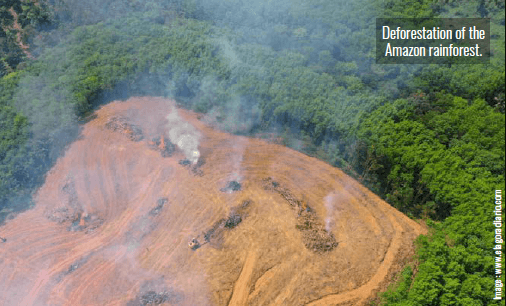 The natural world makes Earth livable.
It drives key processes. These
include cleaning the air, filtering water,
cycling carbon dioxide and pollinating
crops. To stem this biodiversity loss,
governments are working on ambitious
plans. Those plans would set aside
more space for natural habitats. Nature,
after all, needs room to flourish.
One plan now being discussed would
protect 30 percent of land and sea across
the globe by 2030. That number would
reach 50 percent by 2050. Experts hope
this will revive ecosystems and safeguard
the diversity of Earth’s species.
But is 30 percent —or even 50 percent—
enough? And enough for what exactly?
Will it slow when and how many species
go extinct? Will it protect everything
that’s possible to protect?
One place to start is by preserving
what’s left. Humans have altered more
than three-fourths of Earth’s surface.
There are 14 biomes on land, such as
tropical rainforest, tundra and desert.
But in eight of those biomes, less than
10 percent of undeveloped wilderness
remains. Researchers reported this in a
2016 study in Current Biology. ...
Deciding how much of nature needs
to be protected depends on the goal.
... “For instance, recent research has
shown that we probably need 80 to 90
percent of the Amazon intact,” Stuart
Pimm says. Otherwise, the rainforest
may quickly transform into a drier
savannah. And that would threaten the
water cycle for all of South America. ...
The natural world makes Earth livable.
It drives key processes. These
include cleaning the air, filtering water,
cycling carbon dioxide and pollinating
crops. To stem this biodiversity loss,
governments are working on ambitious
plans. Those plans would set aside
more space for natural habitats. Nature,
after all, needs room to flourish.
One plan now being discussed would
protect 30 percent of land and sea across
the globe by 2030. That number would
reach 50 percent by 2050. Experts hope
this will revive ecosystems and safeguard
the diversity of Earth’s species.
But is 30 percent —or even 50 percent—
enough? And enough for what exactly?
Will it slow when and how many species
go extinct? Will it protect everything
that’s possible to protect?
One place to start is by preserving
what’s left. Humans have altered more
than three-fourths of Earth’s surface.
There are 14 biomes on land, such as
tropical rainforest, tundra and desert.
But in eight of those biomes, less than
10 percent of undeveloped wilderness
remains. Researchers reported this in a
2016 study in Current Biology. ...
Deciding how much of nature needs
to be protected depends on the goal.
... “For instance, recent research has
shown that we probably need 80 to 90
percent of the Amazon intact,” Stuart
Pimm says. Otherwise, the rainforest
may quickly transform into a drier
savannah. And that would threaten the
water cycle for all of South America. ...
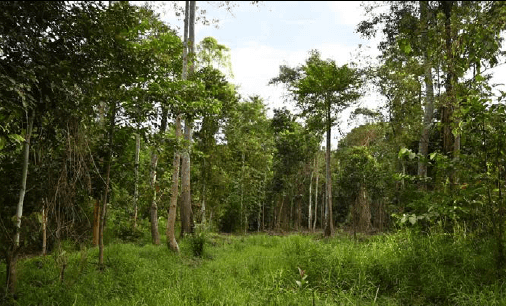 team of researchers established
that approximately half of all trees
planted to restore tropical forests in
Asia do not survive beyond five years.
The researchers included experts from
29 universities and research centers
who analyzed data from 176 forest restoration
sites in tropical and subtropical
Asia. Most of the sites under study
included those where human activities
had led to a decline in tree numbers.
They found that up to 18% of
samplings died within the first year of
planting. After five years, about 44% of
all the samplings had died. They also
observed that the survival rate for the
trees planted depended on the species
and location where planted. Some species
were found to have a survival rate
higher than 80% after five years. In other sites, almost all the trees died.
According to the study whose
findings are published in the Journal
Philosophical Transactions of the Royal
Society B: Biological Sciences, tree planting
should follow a tailored approach to
be successful. “We need to understand
what works and why, and share that
information, so we can bring all sites
up to the level of the most successful
and harness the full potential for restoration,”
said study author Dr. Lindsay
Banin of the U.K. Centre for Ecology
and Hydrology.
While the rate of tree survival was
found to be low, the study found that
planting offers faster results than leaving
forests to regrow naturally. ...
Read full text:
team of researchers established
that approximately half of all trees
planted to restore tropical forests in
Asia do not survive beyond five years.
The researchers included experts from
29 universities and research centers
who analyzed data from 176 forest restoration
sites in tropical and subtropical
Asia. Most of the sites under study
included those where human activities
had led to a decline in tree numbers.
They found that up to 18% of
samplings died within the first year of
planting. After five years, about 44% of
all the samplings had died. They also
observed that the survival rate for the
trees planted depended on the species
and location where planted. Some species
were found to have a survival rate
higher than 80% after five years. In other sites, almost all the trees died.
According to the study whose
findings are published in the Journal
Philosophical Transactions of the Royal
Society B: Biological Sciences, tree planting
should follow a tailored approach to
be successful. “We need to understand
what works and why, and share that
information, so we can bring all sites
up to the level of the most successful
and harness the full potential for restoration,”
said study author Dr. Lindsay
Banin of the U.K. Centre for Ecology
and Hydrology.
While the rate of tree survival was
found to be low, the study found that
planting offers faster results than leaving
forests to regrow naturally. ...
Read full text:
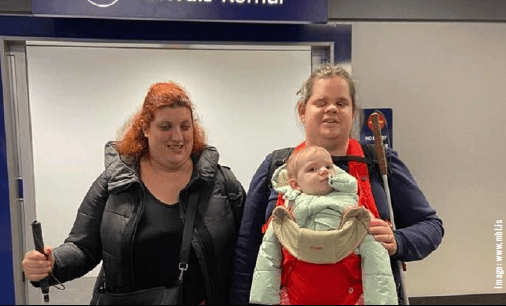 Icelandic couple who are blind were
twice prevented from boarding a SAS
flight to Iceland after being told that
they needed to pay for an escort to accompany
them onboard. RÚV reports
that the couple, who were traveling with
their one-year-old daughter, will be
pursuing legal action against the airline.
Eyþór Kamban Þrastarson and
Emilía Pykarinou had a flight booked
from Athens, Greece to Copenhagen,
Denmark, and then on to Iceland.
However, when they tried to board the
Scandinavian Airlines flight, they were
denied entry. “The airline insisted that
we be accompanied by another person,”
explained Eyþór, who said that
the couple was also supposed to pay for
a third seat for this purpose. They tried
to board another flight two days later
but were prevented from boarding for the same reason. Eyþór believes that
the fact that he and his wife were traveling
with their young daughter played
a part in the airline’s reluctance to
allow them to board, but insisted that
they’d have never booked the flight if
they didn’t feel comfortable looking
after their child while flying.
Eyþór and Emilía were only able to
board because, a week after they were
supposed to have traveled home, they
found an Icelandic woman who already
had a ticket for the same flight and
who agreed to act as their escort. The
couple intends to pursue legal action,
with both Blindrafélagið, the Icelandic
Association of the Visually Impaired,
and the Icelandic consul in Greece,
supporting their case. ...
Icelandic couple who are blind were
twice prevented from boarding a SAS
flight to Iceland after being told that
they needed to pay for an escort to accompany
them onboard. RÚV reports
that the couple, who were traveling with
their one-year-old daughter, will be
pursuing legal action against the airline.
Eyþór Kamban Þrastarson and
Emilía Pykarinou had a flight booked
from Athens, Greece to Copenhagen,
Denmark, and then on to Iceland.
However, when they tried to board the
Scandinavian Airlines flight, they were
denied entry. “The airline insisted that
we be accompanied by another person,”
explained Eyþór, who said that
the couple was also supposed to pay for
a third seat for this purpose. They tried
to board another flight two days later
but were prevented from boarding for the same reason. Eyþór believes that
the fact that he and his wife were traveling
with their young daughter played
a part in the airline’s reluctance to
allow them to board, but insisted that
they’d have never booked the flight if
they didn’t feel comfortable looking
after their child while flying.
Eyþór and Emilía were only able to
board because, a week after they were
supposed to have traveled home, they
found an Icelandic woman who already
had a ticket for the same flight and
who agreed to act as their escort. The
couple intends to pursue legal action,
with both Blindrafélagið, the Icelandic
Association of the Visually Impaired,
and the Icelandic consul in Greece,
supporting their case. ...
 A First Nations health commission
recommends pursuing class-action
lawsuits against those who have allegedly
forced sterilization procedures
on Inuit and First Nations women in
Quebec and Labrador.
The possibility of legal reparations
is just one of several recommendations
stemming from a report the First
Nations of Quebec and Labrador Health
and Social Services Commission released
this week [November 2022].
The report includes the testimony of
22 women who believe they were sterilized
without their consent. The last
case of imposed sterilization recorded
in Quebec occurred just three years ago
in 2019, according to the report.
“For me, the tubal ligation was
nothing. But it’s also something. A part
of me was cut off. Cut off [from the ability to] create life,” one of the participants,
whose identity is protected by
the commission, said in the report.
The commission believes this is
the first time data has been collected
on imposed sterilizations and other
medical violence against patients in
the province when it comes to female
reproductive health. The commission
invited women to share their stories in
May 2021, and a total of 35 are compiled
in the report.
Several participants reported never
having signed a consent form prior to
undergoing a procedure that permanently
altered their reproductive
capacity, such as a tubal ligation or
hysterectomy. ...
A First Nations health commission
recommends pursuing class-action
lawsuits against those who have allegedly
forced sterilization procedures
on Inuit and First Nations women in
Quebec and Labrador.
The possibility of legal reparations
is just one of several recommendations
stemming from a report the First
Nations of Quebec and Labrador Health
and Social Services Commission released
this week [November 2022].
The report includes the testimony of
22 women who believe they were sterilized
without their consent. The last
case of imposed sterilization recorded
in Quebec occurred just three years ago
in 2019, according to the report.
“For me, the tubal ligation was
nothing. But it’s also something. A part
of me was cut off. Cut off [from the ability to] create life,” one of the participants,
whose identity is protected by
the commission, said in the report.
The commission believes this is
the first time data has been collected
on imposed sterilizations and other
medical violence against patients in
the province when it comes to female
reproductive health. The commission
invited women to share their stories in
May 2021, and a total of 35 are compiled
in the report.
Several participants reported never
having signed a consent form prior to
undergoing a procedure that permanently
altered their reproductive
capacity, such as a tubal ligation or
hysterectomy. ...
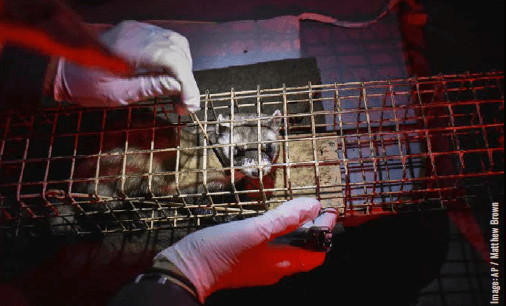 Native species such as swift foxes
and black-footed ferrets disappeared
from the Fort Belknap Indian
Reservation generations ago, wiped out
by poisoning campaigns, disease and
farm plows that turned open prairie
where nomadic tribes once roamed into
cropland and cattle pastures.
Now with guidance from elders and
outside wildlife groups, students and interns
from the tribal college are helping
reintroduce the small predators to the
northern Montana reservation sprawling
across more than 1,000 square miles
(2,600 square kilometers) near the USCanada
border.
Sakura Main, a 24-year-old Aaniiih
woman who is entering Fort Belknap’s
Aaniiih Nakoda College in January, is
helping to locate, trap and vaccinate the severely endangered ferrets against
deadly plague in a program overseen by
the tribal fish and game department.
The nocturnal animals live among
the mounded burrows of prairie dog
colonies, where ferrets stalk the rodents
almost as big as they are, wrapping
themselves around their prey to
strangle and kill it. ...
As extinctions of animals and plants
accelerate around the globe, Native
American tribes with limited funding
are trying to re-establish imperiled
species and restore their habitat —
measures that parallel growing calls to
“rewild” places by reviving degraded
natural systems. ...
Read full text:
Native species such as swift foxes
and black-footed ferrets disappeared
from the Fort Belknap Indian
Reservation generations ago, wiped out
by poisoning campaigns, disease and
farm plows that turned open prairie
where nomadic tribes once roamed into
cropland and cattle pastures.
Now with guidance from elders and
outside wildlife groups, students and interns
from the tribal college are helping
reintroduce the small predators to the
northern Montana reservation sprawling
across more than 1,000 square miles
(2,600 square kilometers) near the USCanada
border.
Sakura Main, a 24-year-old Aaniiih
woman who is entering Fort Belknap’s
Aaniiih Nakoda College in January, is
helping to locate, trap and vaccinate the severely endangered ferrets against
deadly plague in a program overseen by
the tribal fish and game department.
The nocturnal animals live among
the mounded burrows of prairie dog
colonies, where ferrets stalk the rodents
almost as big as they are, wrapping
themselves around their prey to
strangle and kill it. ...
As extinctions of animals and plants
accelerate around the globe, Native
American tribes with limited funding
are trying to re-establish imperiled
species and restore their habitat —
measures that parallel growing calls to
“rewild” places by reviving degraded
natural systems. ...
Read full text:
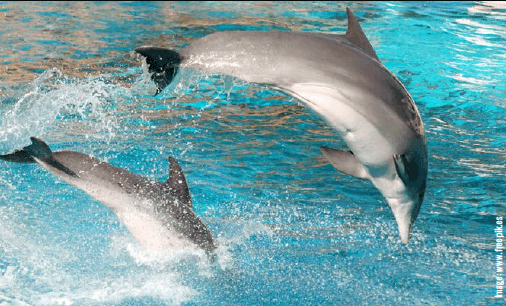 A new pan-Scotland research, a collaboration
between the University of
Glasgow, the Universities of St Andrews
and Edinburgh and the Moredun Research
Institute, studied the brains of 22
odontocetes which had all been stranded
in Scottish coastal waters.
The study, which is published in the
European Journal of Neuroscience, included
five different species —Risso’s
dolphins, long-finned pilot whales,
white-beaked dolphins, harbor porpoises
and bottlenose dolphins— and
found that four animals from different
dolphin species had some of the brain
changes associated with Alzheimer’s
disease in humans.
The findings may provide a possible
answer to unexplained live-stranding
events in some odontocete species. Study authors confirm the results
could support the “sick-leader” theory,
whereby an otherwise healthy pod
of animals find themselves in dangerously
shallow waters after following
a group leader who may have become
confused or lost. ...
For this study researchers examined
stranded animals for the presence of
the brain pathology that are part of
the hallmarks of Alzheimer’s disease,
including the formation of amyloidbeta
plaques, the accumulation of
phospho-tau and gliosis (a change in
cell numbers in response to central
nervous system damage). The results
reveal that the brains of all of the aged
animals studied had amyloid-beta
plaques. ...
A new pan-Scotland research, a collaboration
between the University of
Glasgow, the Universities of St Andrews
and Edinburgh and the Moredun Research
Institute, studied the brains of 22
odontocetes which had all been stranded
in Scottish coastal waters.
The study, which is published in the
European Journal of Neuroscience, included
five different species —Risso’s
dolphins, long-finned pilot whales,
white-beaked dolphins, harbor porpoises
and bottlenose dolphins— and
found that four animals from different
dolphin species had some of the brain
changes associated with Alzheimer’s
disease in humans.
The findings may provide a possible
answer to unexplained live-stranding
events in some odontocete species. Study authors confirm the results
could support the “sick-leader” theory,
whereby an otherwise healthy pod
of animals find themselves in dangerously
shallow waters after following
a group leader who may have become
confused or lost. ...
For this study researchers examined
stranded animals for the presence of
the brain pathology that are part of
the hallmarks of Alzheimer’s disease,
including the formation of amyloidbeta
plaques, the accumulation of
phospho-tau and gliosis (a change in
cell numbers in response to central
nervous system damage). The results
reveal that the brains of all of the aged
animals studied had amyloid-beta
plaques. ...

 Increase your balance, strength, and confidence with
this Balance Board. It helps with joint mobility, coordination, strength,
reaction time, body awareness/control, and even helps keep your brain younger.
gifts.thegrommet.com
Increase your balance, strength, and confidence with
this Balance Board. It helps with joint mobility, coordination, strength,
reaction time, body awareness/control, and even helps keep your brain younger.
gifts.thegrommet.com
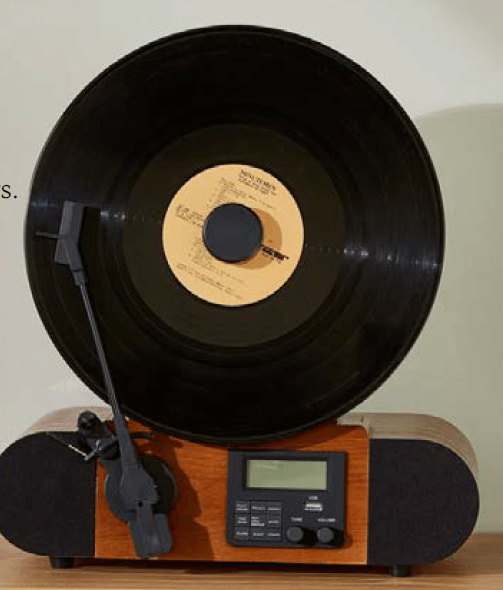 Vertical vinyl record
player with bluetooth & FM radio.
With a counter weighted tonearm
that prevents wobbling and delivers
high-quality sound with its Audio-
Technica needle and built-in speakers.
store.moma.org
Vertical vinyl record
player with bluetooth & FM radio.
With a counter weighted tonearm
that prevents wobbling and delivers
high-quality sound with its Audio-
Technica needle and built-in speakers.
store.moma.org
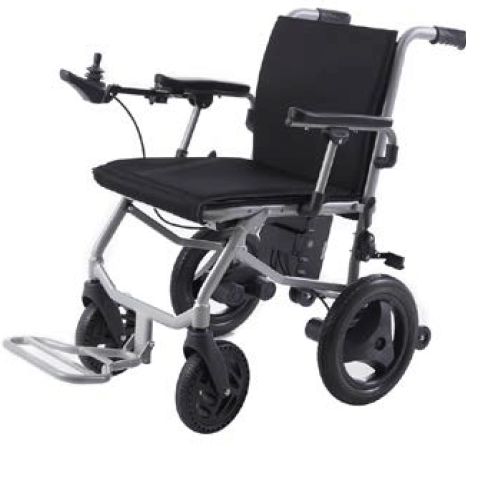
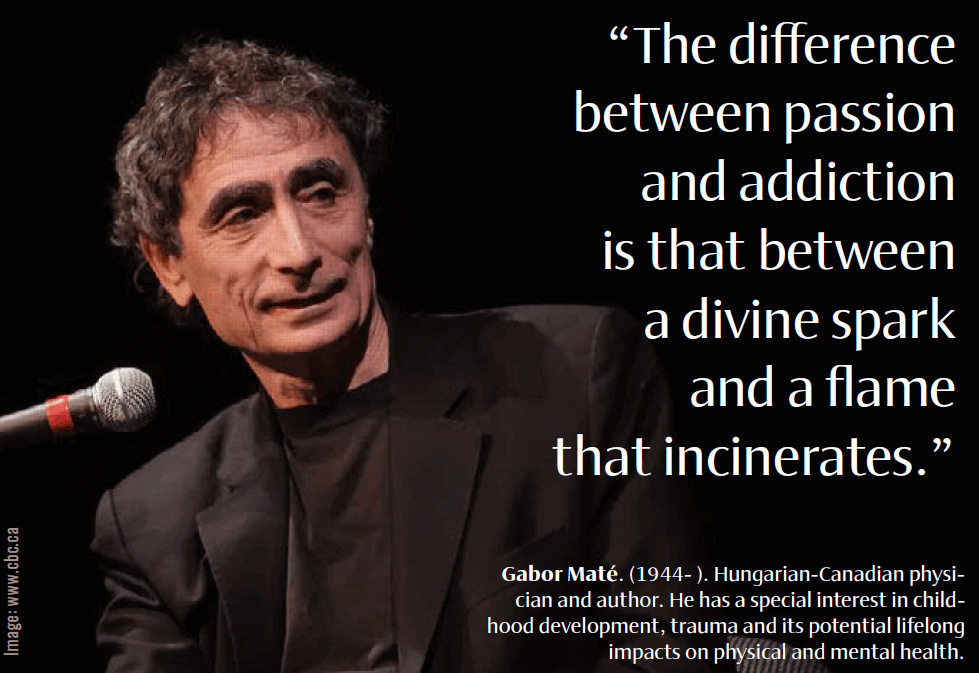 “The difference
between passion
and addiction
is that between
a divine spark
and a flame
that incinerates.”
“The difference
between passion
and addiction
is that between
a divine spark
and a flame
that incinerates.”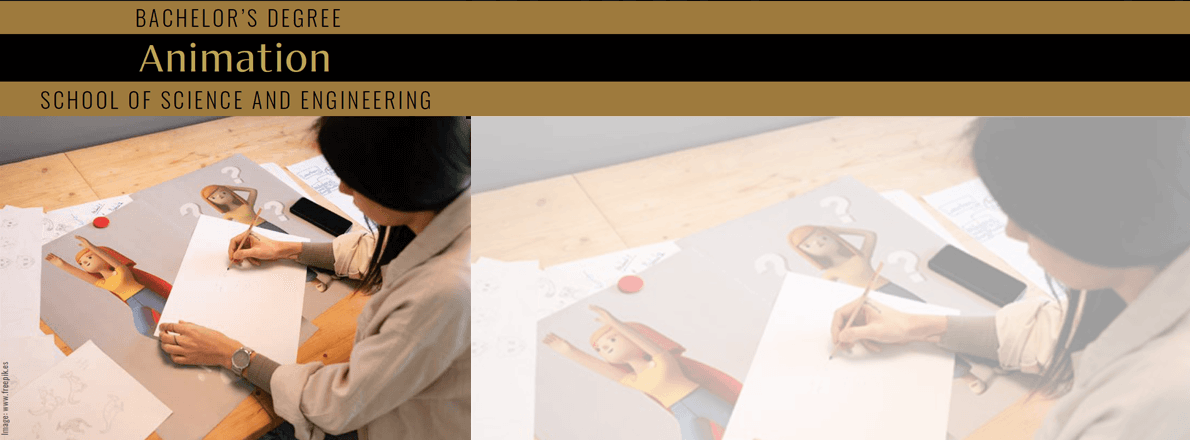 The Bachelor of Animation (BS)
program objective is to help students
strengthen basic art and design
skills, so they learn how to design
game play and background, create
characters and their environments.
Graduates will have the training and
skills necessary to compete for entrylevel
positions in the game industry.
The Bachelor of Animation (BS)
program is offered online via distance
learning. After evaluating both
academic record and life experience,
AIU staff working in conjunction
with Faculty and Academic Advisors
will assist students in setting up a
custom-made program, designed on
an individual basis. This flexibility to
meet student needs is seldom found
in other distance learning programs.
Our online program does not require
all students to take the same subjects/
courses, use the same books,
or learning materials. Instead, the
online Bachelor of Animation (BS)
curriculum is designed individually by
the student and academic advisor. It
specifically addresses strengths and
weaknesses with respect to market
opportunities in the student’s major
and intended field of work. Understanding
that industry and geographic
factors should influence the content
of the curriculum instead of a standardized
one-fits-all design is the
hallmark of AIU’s unique approach
to adult education. This philosophy
addresses the dynamic and constantly
changing environment of working
professionals by helping adult students
in reaching their professional
and personal goals within the scope
of the degree program.
The Bachelor of Animation (BS)
program objective is to help students
strengthen basic art and design
skills, so they learn how to design
game play and background, create
characters and their environments.
Graduates will have the training and
skills necessary to compete for entrylevel
positions in the game industry.
The Bachelor of Animation (BS)
program is offered online via distance
learning. After evaluating both
academic record and life experience,
AIU staff working in conjunction
with Faculty and Academic Advisors
will assist students in setting up a
custom-made program, designed on
an individual basis. This flexibility to
meet student needs is seldom found
in other distance learning programs.
Our online program does not require
all students to take the same subjects/
courses, use the same books,
or learning materials. Instead, the
online Bachelor of Animation (BS)
curriculum is designed individually by
the student and academic advisor. It
specifically addresses strengths and
weaknesses with respect to market
opportunities in the student’s major
and intended field of work. Understanding
that industry and geographic
factors should influence the content
of the curriculum instead of a standardized
one-fits-all design is the
hallmark of AIU’s unique approach
to adult education. This philosophy
addresses the dynamic and constantly
changing environment of working
professionals by helping adult students
in reaching their professional
and personal goals within the scope
of the degree program.
 Atlantic International University is accredited by the Accreditation Service for International
Schools, Colleges and Universities (ASIC). ASIC Accreditation is an internationally
renowned quality standard for colleges and universities. Visit ASIC’s Directory of Accredited
Colleges and Universities. ASIC is a member of CHEA International Quality Group
(CIQG) in the USA, an approved accreditation body by the Ministerial Department of the Home Office
in the UK, and is listed in the International Directory of the Council for Higher Education Accreditation
(CHEA). The University is based in the United States and was established by corporate charter in 1998.
Atlantic International University is accredited by the Accreditation Service for International
Schools, Colleges and Universities (ASIC). ASIC Accreditation is an internationally
renowned quality standard for colleges and universities. Visit ASIC’s Directory of Accredited
Colleges and Universities. ASIC is a member of CHEA International Quality Group
(CIQG) in the USA, an approved accreditation body by the Ministerial Department of the Home Office
in the UK, and is listed in the International Directory of the Council for Higher Education Accreditation
(CHEA). The University is based in the United States and was established by corporate charter in 1998.
 In some cases, accredited colleges
may not accept for transfer courses and degrees
completed at unaccredited colleges, and some
employers may require an accredited degree as
a basis for eligibility for employment. Potential
students should consider how the above may affect
their interests, AIU respects the unique rules and
regulations of each country and does not seek to
influence the respective authorities. In the event
that a prospective student wishes to carry out any
government review or process in regards to his
university degree, we recommend that the requirements
of such are explored in detail with the relevant
authorities by the prospective student as the
university does not intervene in such processes.
AIU students can be found in over 180 countries,
they actively participate and volunteer
in their communities as part of their academic
program and have allocated thousands of service
hours to diverse causes and initiatives. AIU
programs follow the standards commonly used by
colleges and universities in the United States with
regards to the following: academic program
structure, degree issued, transcript, and
other graduation documents.
AIU graduation documents can include
an apostille and authentication from the
US Department of State to facilitate their
use internationally.
In some cases, accredited colleges
may not accept for transfer courses and degrees
completed at unaccredited colleges, and some
employers may require an accredited degree as
a basis for eligibility for employment. Potential
students should consider how the above may affect
their interests, AIU respects the unique rules and
regulations of each country and does not seek to
influence the respective authorities. In the event
that a prospective student wishes to carry out any
government review or process in regards to his
university degree, we recommend that the requirements
of such are explored in detail with the relevant
authorities by the prospective student as the
university does not intervene in such processes.
AIU students can be found in over 180 countries,
they actively participate and volunteer
in their communities as part of their academic
program and have allocated thousands of service
hours to diverse causes and initiatives. AIU
programs follow the standards commonly used by
colleges and universities in the United States with
regards to the following: academic program
structure, degree issued, transcript, and
other graduation documents.
AIU graduation documents can include
an apostille and authentication from the
US Department of State to facilitate their
use internationally.
| Dr. Franklin Valcin Presi den t/Academic Dean |
Dr. José Mercado Chief Executive Officer Chairman of the Board of Trustees |
Ricardo González, PhD Provost |
| Dr. Ricardo Gonzalez Chief Operation Officer and MKT Director |
Linda Collazo Logistics Coordinator |
AIU Tutors Coordinators: Deborah Rodriguez Amiakhor Ejaeta Amanda Gutierrez William Mora Miriam James Admissions Coordinators: Amalia Aldrett Sandra Garcia Junko Shimizu Veronica Amuz Alba Ochoa Jenis Garcia Judith Brown Chris Soto René Cordón Dr. Anderas Rissler Academic Coordinators: Dr. Adesida Oluwafemi Dr. Emmanuel Gbagu Dr. Lucia Gorea Dr. Edgar Colon Dr. Mario Rios Freddy Frejus Dr. Nilani Ljunggren De Silva Dr. Scott Wilson Dr. Mohammad Shaidul Islam |
| Dr. Miriam Garibaldi Vice provost for Research |
Carolina Valdes Human Resource Coordinator |
|
| Dr. Ofelia Miller Director of AIU |
Carlos Aponte Teleco mmunications Coordinator |
|
| Clara Margalef Director of Special Projects of AIU |
David Jung Corporate/Legal Counsel |
|
| Juan Pablo Moreno Director of Operations |
Bruce Kim Advisor/Consultant |
|
| Paula Viera Director of Intelligence Systems |
Thomas Kim Corporate/ Accounting Counsel |
|
| Felipe Gomez Design Director / IT Supervisor |
Maricela Esparza Administrative Coordinator |
|
| Kevin Moll Web Designer |
Chris Benjamin IT and Hosting Support |
|
| Daritza Ysla IT Coordinator |
Maria Pastrana Accounting Coordinator |
|
| Daritza Ysla IT Coordinator |
Roberto Aldrett Communications Coordinator |
|
| Nadeem Awan Chief Programming Officer |
Giovanni Castillo IT Support |
|
| Dr. Edward Lambert Academic Director |
Antonella Fonseca Quality Control & Data Analysis |
|
| Dr. Ariadna Romero Advisor Coordinator |
Adrián Varela Graphic Design |
|
| Jhanzaib Awan Senior Programmer |
Vanesa D’Angelo Content Writer |
|
| Leonardo Salas Human Resource Manager |
Jaime Rotlewicz Dean of Admissions |
|
| Benjamin Joseph IT and Technology Support |
Michael Phillips Registrar’s Office |
|
| Rosie Perez Finance Coordinator |
||
 The School of Business and Economics
allows aspiring and practicing
professionals, managers, and entrepreneurs
in the private and public sectors
to complete a self paced distance
learning degree program of the highest
academic standard.
The ultimate goal is to empower
learners and help them take advantage
of the enormous array of resources
from the world environment in order
to eliminate the current continuum of
poverty and limitations.
Degree programs are designed for
those students whose professional experience has been in business,
marketing, administration, economics,
finance and management.
The School of Business and Economics
allows aspiring and practicing
professionals, managers, and entrepreneurs
in the private and public sectors
to complete a self paced distance
learning degree program of the highest
academic standard.
The ultimate goal is to empower
learners and help them take advantage
of the enormous array of resources
from the world environment in order
to eliminate the current continuum of
poverty and limitations.
Degree programs are designed for
those students whose professional experience has been in business,
marketing, administration, economics,
finance and management.
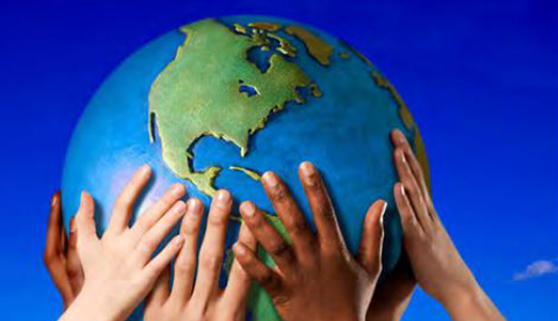 The School of Social and Human Studies
is focused on to the development of
studies which instill a core commitment
to building a society based on social and
economic justice and enhancing opportunities
for human well being.
The founding principles lie on the
basic right of education as outlined
in the Declaration of Human Rights.
We instill in our students a sense of
confidence and self reliance in their
ability to access the vast opportunities
available through information channels,
the world wide web, private, public,
nonprofit, and nongovernmental organizations in an ever expanding
global community.
Degree programs are aimed towards
those whose professional life has been
related to social and human behavior,
with the arts, or with cultural studies.
The School of Social and Human Studies
is focused on to the development of
studies which instill a core commitment
to building a society based on social and
economic justice and enhancing opportunities
for human well being.
The founding principles lie on the
basic right of education as outlined
in the Declaration of Human Rights.
We instill in our students a sense of
confidence and self reliance in their
ability to access the vast opportunities
available through information channels,
the world wide web, private, public,
nonprofit, and nongovernmental organizations in an ever expanding
global community.
Degree programs are aimed towards
those whose professional life has been
related to social and human behavior,
with the arts, or with cultural studies.
 The School of Science and Engineering
seeks to provide dynamic, integrated,
and challenging degree programs
designed for those whose experience
is in industrial research, scientific production,
engineering and the general
sciences. Our system for research and
education will keep us apace with the
twenty-first century reach scientific
advance in an environmentally and
ecologically responsible manner to allow
for the sustainability of the human
population. We will foster among our
students a demand for ethical behavior,
an appreciation for diversity, an understanding
of scientific investigation, knowledge of design innovation, a
critical appreciation for the importance
of technology and technological change
for the advancement of humanity.
The School of Science and Engineering
seeks to provide dynamic, integrated,
and challenging degree programs
designed for those whose experience
is in industrial research, scientific production,
engineering and the general
sciences. Our system for research and
education will keep us apace with the
twenty-first century reach scientific
advance in an environmentally and
ecologically responsible manner to allow
for the sustainability of the human
population. We will foster among our
students a demand for ethical behavior,
an appreciation for diversity, an understanding
of scientific investigation, knowledge of design innovation, a
critical appreciation for the importance
of technology and technological change
for the advancement of humanity.
 With access to a global catalog created and maintained collectively by more than
9,000 participating institutions, AIU students have secured excellent research
tools for their study programs.
With access to a global catalog created and maintained collectively by more than
9,000 participating institutions, AIU students have secured excellent research
tools for their study programs.